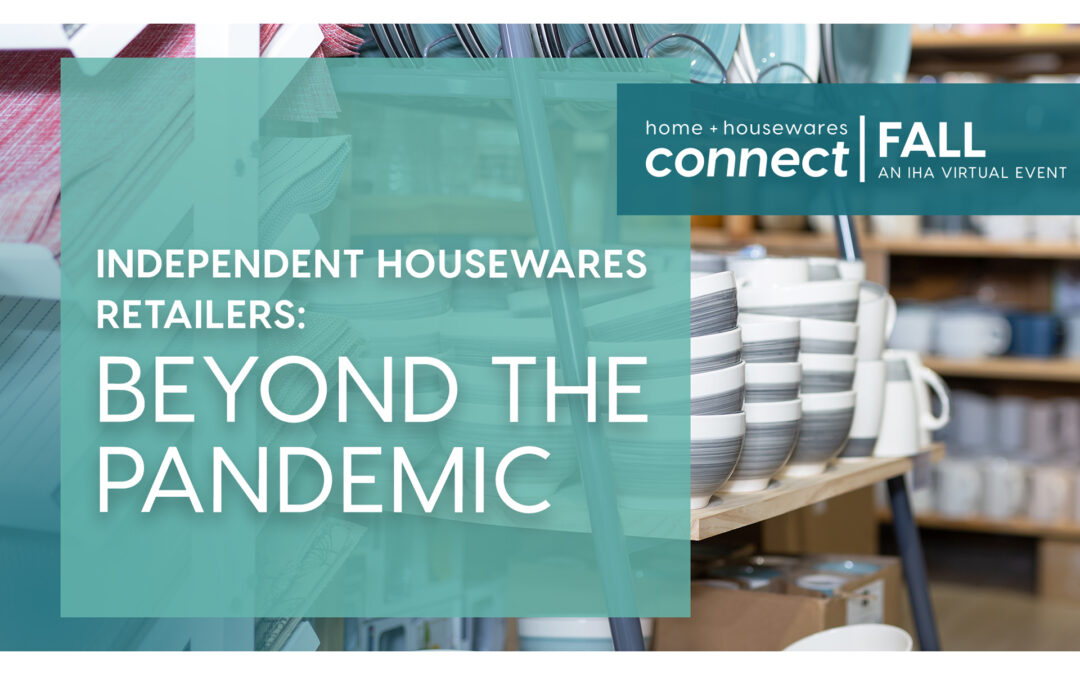Independent housewares retailers were among the first to pivot to innovative, safe and effective ways of serving their communities with necessary products and services during the pandemic. Two such storeowners detailed during IHA’s Connect Fall virtual event how they confronted the challenges of the pandemic to build stronger foundations for long-term success.
Tony Curtis-Wellings of Faraday’s Kitchen Store in Austin, Texas, joined Jamie Butler of The Butler’s Pantry in Escalon, California, in a panel discussion moderated by Peter Giannetti, editor-in-chief of HomePage News.

Tony Curtis-Wellings, Faraday’s Kitchen Store

Jamie Butler, The Butler’s Pantry
Biggest Changes
For Butler, one of the largest changes during the pandemic was to create a website for online orders, and ordering products well in advance became a necessity to keep items in stock for her customers, especially with the added online presence.
Additionally, Butler has begun to expand the store’s offerings beyond retail and in-store cooking classes to include an upcoming restaurant and gift shop. She said she hopes to create a full-fledged experience that encompasses products and education.
Curtis-Wellings explained the opportunity to serve the growing interest in high-end outdoor cooking led to the recent opening of an outdoor cooking retail showroom adjacent to an expanded Faraday’s Kitchen Store.
While Faraday’s already had a website in place, the site offering during the pandemic was increased from 500 to some 3,500. While the growth rate of online orders has begun to moderate, Curtis-Wellings said the wider online offering has helped drive increasing of in-store purchases.
New Customer Bases
For Curtis-Wellings, the pandemic brought in new customers who previously did not normally cook for indoor and outdoor cooking essentials.
Butler found the same, noting that independent retailers benefit by having the retail buyers on the selling floor. They can educate customers about the product features and benefits, she said.
Increase in Shopping Local
While shopping local had been a growing factor before the pandemic, it has ramped up during the pandemic and continues to be an advantage for responsive independent retailers, the panelists agreed.
Local customers have embraced small businesses that can pivot quickly, Butler remarked. Curtis-Wellings added the sense of community referral to his business during the pandemic was rewarding.
Relations with Housewares Suppliers
Communication from the vendors has been key for Butler and Curtis-Wellings. Vendors consistent and open in the communication about inventory levels with Curtis-Wellings experienced the highest sales growth at Faraday’s during the year, Curtis-Wellings said, adding such dialog enabled him to create specific promotions around prime product availability.
Overcoming Supply-Chain Challenges
Butler and Curtis-Wellings said they brought in higher levels of inventory where possible to offset the potential for holiday shortages caused by supply-chain disruption. “I have been hoarding inventory like people were hoarding toilet paper,” Butler said with a laugh. Curtis-Wellings said he was at holiday levels of inventory in the store much earlier than usual.
The retailers also agreed they look forward to the continued return of trade shows and face-to-face meetings, along with the return of an emphasis by the home and housewares industry on new products.
To conclude the session, Butler stated independent retailers need to progress past any fear of change. “Evolve, it’s fun, and if you accept it and take it on, you’ll win,” Curtis-Wellings added, noting that it is important to listen closely to your customers and employees and respond quickly to their needs.

